
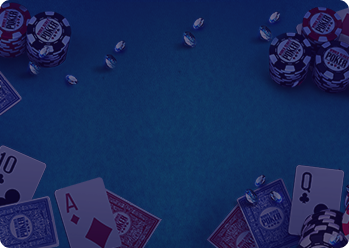
Poker Hands Chart:
Best to Worst with Rankings
and Tips
You can’t win in poker if you don’t know how hands are ranked, which is why I’m here to help. As well as giving you a printable poker hands chart, I’m going to
explain how to use poker hand rankings to your advantage.
So, if you’re a fan of Hold’em, Omaha, or any other variants and have dreams of winning a WSOP bracelet, this is where you need to start. Once you’re finished
reading, bookmark this poker hands cheat sheet so you can master the ranking of cards and become a better player.
Quick Poker Hands Chart
We’ll delve into the specifics of each poker hand in the next section.
Before that, let’s take a bird’s eye view of the best poker hands by rank.
1. Royal Flush
An ace-high straight flush100%
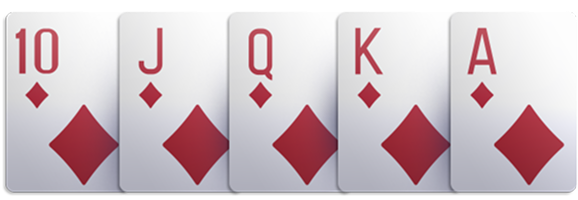
2. Straight Flush
Five suited cards in sequential order
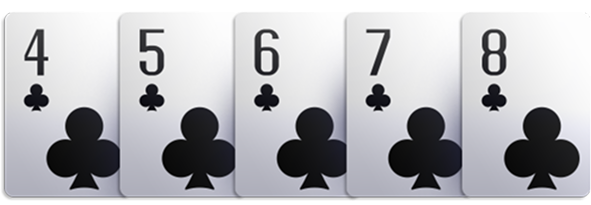
3. Four-of-a-kind (Quads)
Five suited cards in sequential order
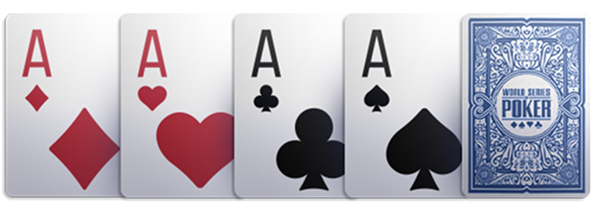
4. Full House
Three-of-a-kind + a pair
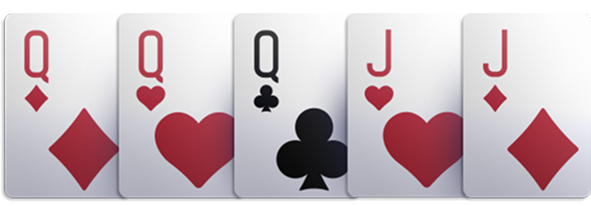
5. Flush
Five cards of the same suit

6. Straight
Five cards in sequential order
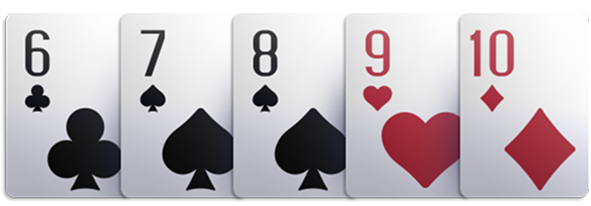
7. Three-of-a-kind (Trips/Set)
Three cards of the same value + two non-matching cards

8. Two Pair
Two cards of the same value + two cards of the same value + one non-matching card
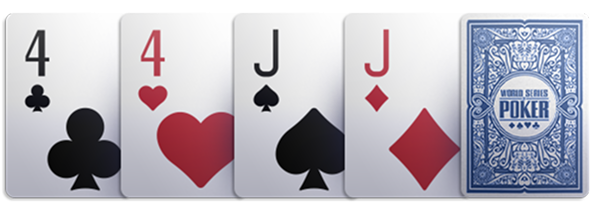
9. One Pair
Two cards of the same value + three non-matching cards
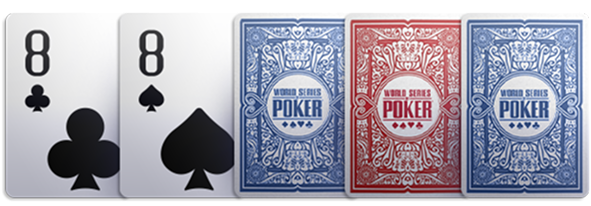
10. High Card
No matching cards – highest value card plays
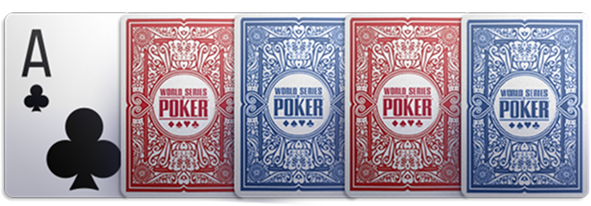
How Do You Make Poker Hands in Texas Hold’em?
Everyone receives two hole cards that they can combine with five community cards.
These cards can be used by everyone to make a five-card poker hand.
The community cards are dealt in three stages:
· The flop (three cards)
· The turn (one card)
· The river (one card)
Let’s say you’re dealt A♦ K♦ and stay in the hand until the flop. The first three community cards are J♦ 6♦ 7♠. At this point, you’ve got enough cards to make a five-card poker hand.
However, as you can see from our hands ranking chart, you only have a “high card.” You stick around to see the turn. The 2♦ lands on the turn.
Now, you can combine your hole cards (A♦K♦) with J♦ 6♦ 2♦. Using our poker hands chart, you can see that five suited cards make a flush.
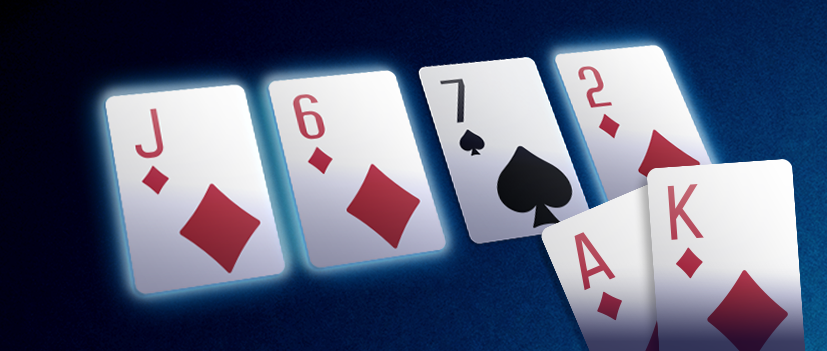
Making Five-Card Poker Hands in Other Variants
The way you make hands in Omaha is similar, except you have four hole cards, and you must use two of them. In non-community card games, such as Draw and Stud, you make winning poker hands from the cards dealt to you specifically.
Poker Hands Explained (Detailed Rankings)
Let’s take a look at the various poker card hands you can make and their associated odds. For context, the odds columns refer to the likelihood you’ll make that hand on the flop in Texas Hold’em rather than other variants such as video poker and three-card poker.
| Hand | Explanation | What it Beats | Number of Ways Hand Can be Made (Combinations) | Odds of Making a Hand on the Flop |
|---|---|---|---|---|
|
Royal Flush
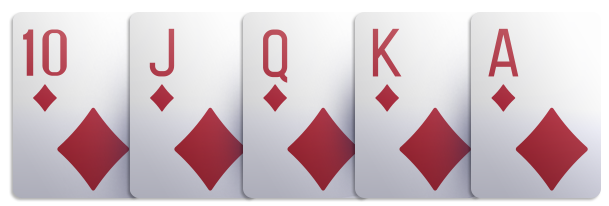
|
An ace-high straight flush |
What does a royal flush beat in poker?
A royal flush beats all other hands.
|
4 | 0.005% |
|
Straight Flush
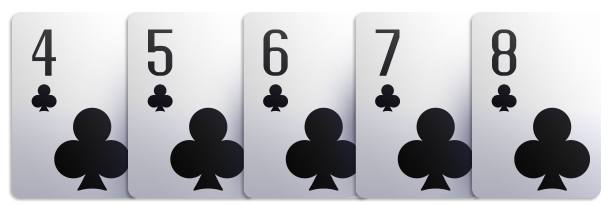
|
Five suited cards in sequential order |
What does a straight flush beat in poker?
A straight flush beats four-of-a-kind and any worse hands.
|
36 |
0.02% (with suited connectors, e.g. 5♠ 6♠) |
|
Four-of-a-kind (Quads)
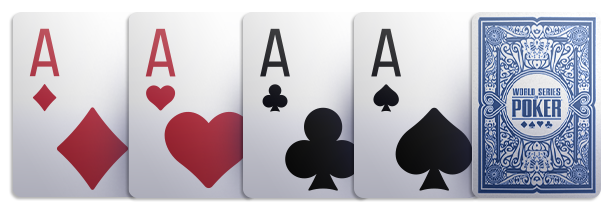
|
Four cards of the same value + one non- matching card |
What does four-of-a-kind beat in poker?
Four-of-a-kind beats a full house and worse-ranked hands, but it doesn’t beat a straight flush or royal flush.
|
624 |
0.03% (unpaired hole card) /0.24% (pocket pair) |
|
Full House
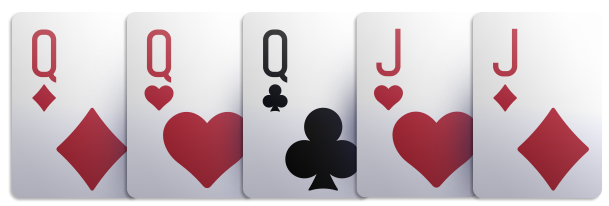
|
Four cards of the same value + one non-matching card |
What does a full house beat in poker?
A full beats a flush in poker. It also beats a straight and all lower-ranked hands.
|
3,744 |
0.09% (unpaired hole card) /0.98% (pocket pair) |
|
Flush
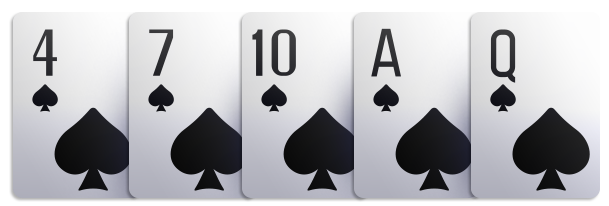
|
Three-of-a-kind + a pair |
What does a flush beat in poker?
Flushes beat straights in poker, and any hand ranked below a straight.
|
5,108 | 0.8% |
|
Straight

|
Five cards of the same suit |
What does a straight beat in poker?
Straights beat three-of-a-kind and any lower-ranked hands.
|
10,200 | 1.3% |
|
Three-of-a-kind (Trips/Set)
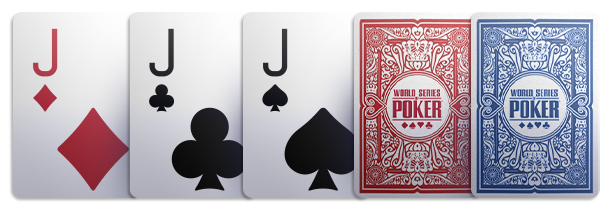
|
Five cards in sequential order |
What does three-of-a-kind beat in poker?
Three-of-a-kind, aka sets or trips, beat two-pair hands in poker.
|
54,912 |
1.35% (unpaired hole card) /11.5% (pocket pair) |
|
Two Pair
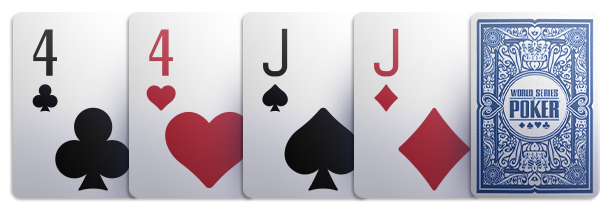
|
Three cards of the same value + two non- matching cards |
What does two pair beat in poker?
A two-pair hand in poker beats a single pair, but it doesn’t beat three-of-a-kind or better.
|
123,552 | 2% |
|
A Pair
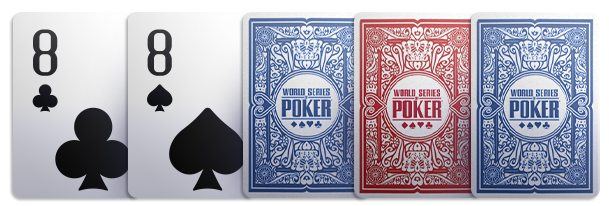
|
Two cards of the same value + two cards of the same value + one non-matching card |
What does a pair beat in poker?
A pair only beats a non-ranked high-card hand. If two players have a pair, the highest-value pair wins.
|
1,098,240 | 29% |
|
High Card

|
No matching cards – highest value card plays |
Five cards that don’t make a hand are judged according to their highest single card. These hands rarely win showdowns
|
1,302,540 | N/A |
Basic Poker Strategy: Odds and Outs
Knowing the rank of poker hands is important, but it’s not enough to make you a winning player. That’s why I like to consider the odds of each hand when I’m making decisions.
For example, we know from our poker hands cheat sheet that hitting a royal flush on the flop is incredibly unlikely (it happens 0.005% of the time). In contrast, you’ll make a pair approximately 1/3 of the time (29%) in Hold’em.
That’s useful information because it tells us two things:
1. Opponents don’t flop good poker hands very often.
2. We won’t flop the best hands in poker very often.
Based on these assumptions, we should be more willing to continue in a hand if we have a strong draw. Why? Because we don’t have anything and, most likely, neither do our opponents.
Moreover, if an opponent does have a hand, it’s less likely to be among the best poker hands. Therefore, if we hit our draw or apply enough pressure on later streets to make weak hands fold, we could win the pot.
Importance of Hand Rankings in Poker Strategy
We’ve already teased out some basic poker theory from our hand rankings chart. Let’s build on this by putting together a strategy for playing Texas Hold’em poker hands:
Step 1. The Best Starting Hands in Poker
Start as you mean to go. The better hole cards you start with, the more likely you are to make winning poker hands in Hold’em and other variants.
Strong vs. Weak Poker Hands
Before we list the best starting hands in poker, let’s define what we mean by good and bad cards.
Good Starting Hands in Poker
Good cards are closely related in value. An ace and a king are next to each other in terms of card values. Similarly, the 4♦ and the J♦ are closely related because they’re both diamonds.
Cards that are closely related give you a better chance of making ranked hands in poker. So, A-K gives you the chance to make strong pairs, sets, quads, and full houses. You can also make straights with A-K.
4♦ J♦ isn’t as closely related as it could be. However, because you’ve got two diamonds, a flush is possible. So, in the right contexts, this could be described as a good starting hand.
Weak Starting Hands in Poker
A weak starting hand contains two cards that are unconnected in terms of numerical value and suits.
The weakest starting hand in poker is 7-2 offsuit, e.g. 7♥ 2♠.
These two cards are as unconnected as they could possibly be. Because of this, it’s hard to make winning poker hands with 7-2 offsuit.
The Best Starting Hands in Texas Hold’em.
Here are the best starting hands in poker broken down into categories:
· Pocket Pairs: A-A, K-K, Q-Q, J-J, T-T.
· Ace-High Hands: A-K (suited and unsuited), A-Q (suited and unsuited), A-J (suited and unsuited), A-T (suite d).
· King-High Hands: K-Q (suited and unsuited), K-J (suited)
· Suited Connectors: Q-J, J-T, T-9, 8-9, 7-6.
· Connectors: Q-J, J-T, T-9.
All of the above are good poker hands, but that doesn’t mean you should play them blindly. Context matters. For example, suited connectors are great if you’re in a late position and there are multiple people in hand because the pot odds are in your favor.
However, if you’re first to act on an aggressive table, suited connectors are a fold. Therefore, you should assess the game’s dynamics and use our poker hands cheat sheet to decide if your cards are good enough to play.
Step 2. Know Your Odds: The Rule of 4 & 2
The art of making winning poker hands is knowing how likely they are to hit on the flop, turn, and river. I’ve already given you the odds of making poker hands on the flop in Hold’em, so let’s talk about the turn and river.
The easiest way to calculate your chances of making ranked hands in poker is the Rule of
4 & 2.
Here’s an example of the Rule of 4 & 2 in action:
· Your hole cards = A♦ K♦
· Flop: J♦ 6♦ 7♠
· Your outs (cards that can make a flush) = 9 diamonds
· Your odds of hitting a flush on the turn or river = 9 x 4 = 36%
· Your odds of hitting a flush on the river = 9 x 2 = 18%
These quick calculations can tell you whether it’s worth continuing in a hand based on the amount of money in the pot and what you might theoretically win. A high percentage chance + a big potential payoff can be reasons to continue.
Step 3. Use the Poker Hands Ranking Chart Against Your Opponents
Knowing the likelihood of making poker hands can help you make successful bluffs. For example, let’s say there are four hearts on the board, and your opponent checks on the river.
You might not have a heart in your hand, but you don’t think they have either. This could be a great spot to bluff because they’ll assume you’ve got a flush and fold.
Common Misconceptions About Poker Hands
One of the biggest issues new players face when they’re learning how to play poker is tie-breakers.
For example, two players can have a flush in Texas Hold’em, so a winner has to be determined using the highest card.
Here are two hands of equal rank. See if you can pick the winning player:
· Player 1 Hand: 5♦ 6♦
· Player 2 Hand: A♦ 2♦
· Board: 3♦ J♦ T♦ 8♠ A♠
Winner = Player 2 is the winner because their highest card is an ace.
That means they have an ace-high flush, which is better than Player 1’s six-high flush.
This method for dealing with tie-breakers is known as a kicker card. If two hands have the same rank at a showdown, a player’s highest card (the kicker) is used to determine a winner.
Printable Poker Hands Cheat Sheet
You can download our handy poker hands cheat sheet right here.
This PDF contains a breakdown of the poker hands order and what each one looks like.
There’s nothing in the rules of poker that says you can’t have a hand rankings chart while you play. So, I encourage you to download the Play WSOP poker hands chart and print it out or add it to your mobile for easy reference each time you ante up.
Advanced Poker Tips and Tricks
The art of hand reading is based on three main variables:
· Your cards
· The community cards
· Your opponent’s actions and tendencies
Let’s say you’re holding K♠ Q♠, and the board is J♠ T♠ 5♦ 2♣. You know your opponent is loose and aggressive, which means they play a wide range of poker hands.
Your opponent makes a big bet on the turn. Using the three variables above, we could make a case for calling or raising. Firstly, your cards give you straight, flush, and straight flush draws.
Secondly, we know this opponent plays a lot of hands, which means they’re likely to be bluffing or have a weak hand. Raising in this spot would force them to fold bluffs and a lot of weak hands.
Alternatively, if you call, you could make a lot of good poker hands on the river and potentially win a showdown.
Position
Position is power in poker because you’ve got more information. The general rule is this: play a tight range from early positions and a wider range from later positions.
For example, A♠ T♣ is a strong hand if you’re on the button, but I wouldn’t want to play it from first position on a nine-handed table.
The chances that someone will have a strong hand and raise in this situation are too great. What’s more, it’s easier for someone to take advantage of me on later streets if the board is full of low cards.
The point to take from this is that the value of poker hands comes from their relative strength compared to other hands, as well as your position at the table. Good poker hands can be weak in certain positions, and weak ones can be strong in the right position.
Always Remember the Value of Hands in Poker
Knowing how poker hands are ranked can give you a huge strategic advantage. From winning showdowns with the best poker hands to successfully bluffing opponents, your knowledge of card rankings matters.
All the information you need to master the art of poker hands is on this page, so bookmark it or print our cheat sheet until you’ve memorized the rankings. After that, you can use our poker strategy articles to improve your chances of becoming a WSOP champion.


